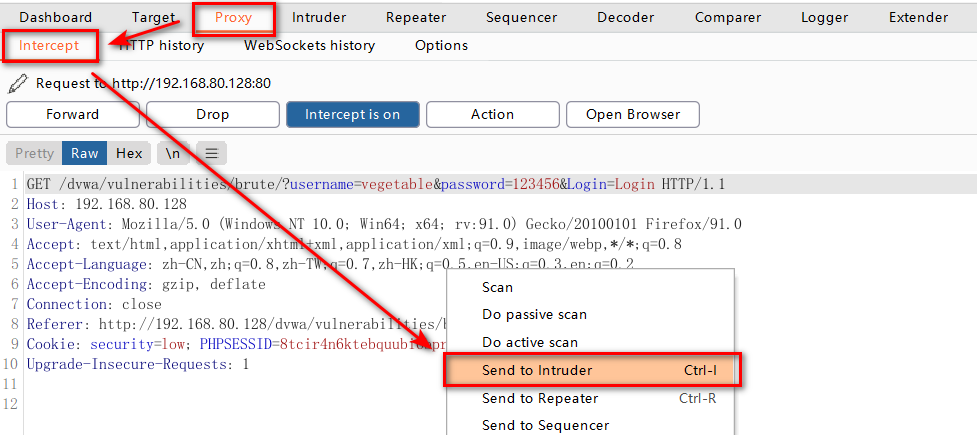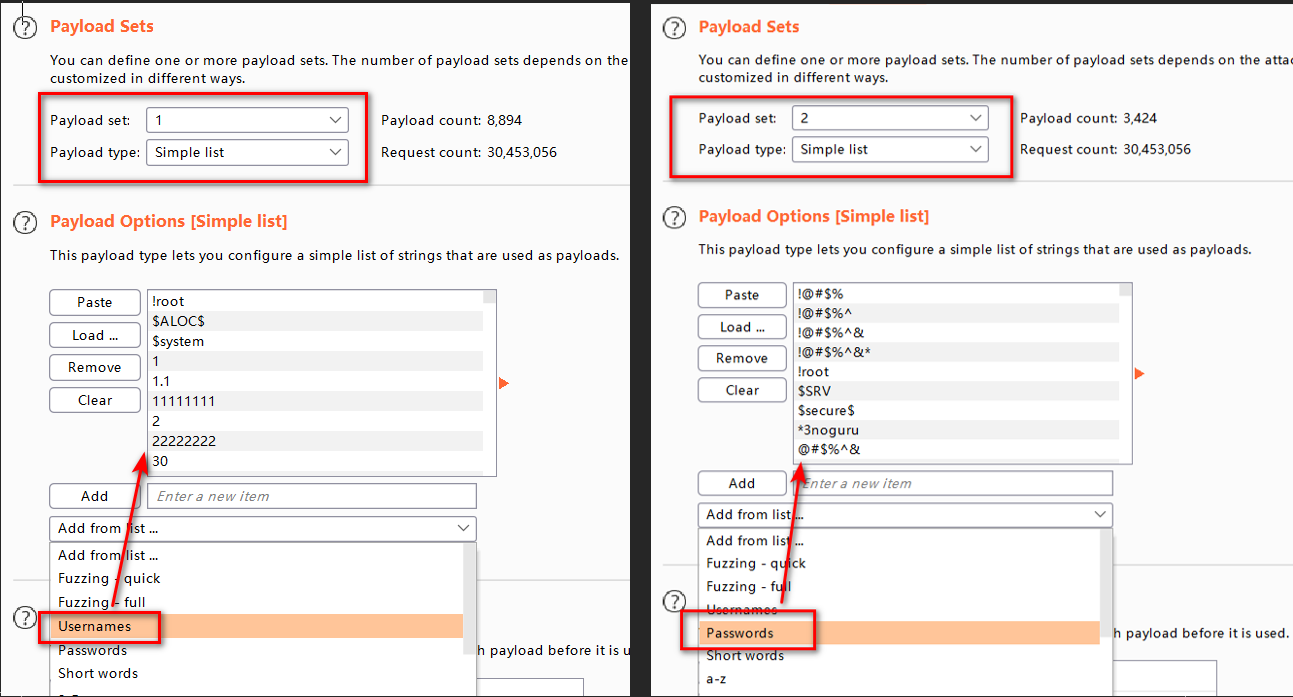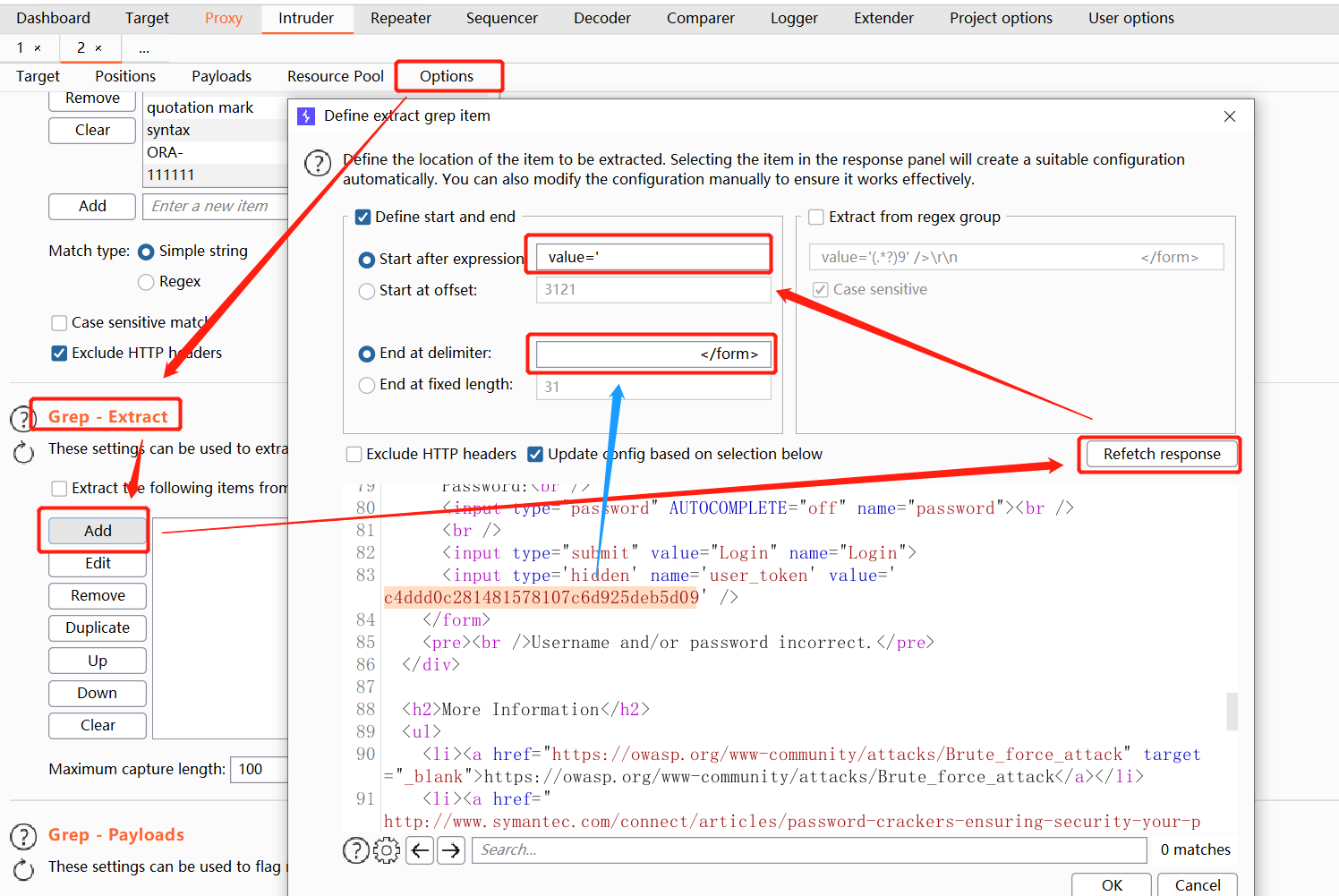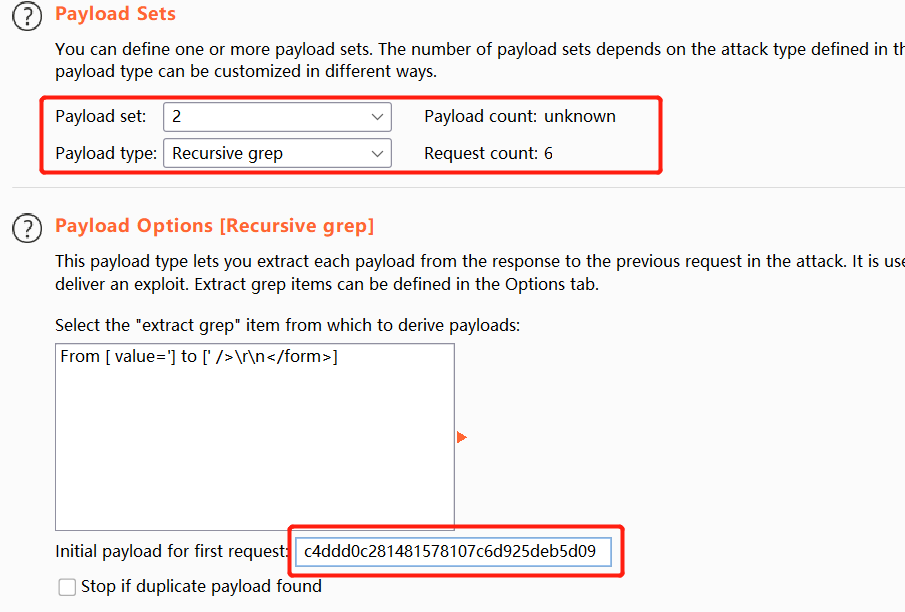Catalog
low
Source code:
<?php
if( isset( $_GET[ 'Login' ] ) ) {
// Get username
$user = $_GET[ 'username' ];
// Get password
$pass = $_GET[ 'password' ];
$pass = md5( $pass );
// Check the database
$query = "SELECT * FROM `users` WHERE user = '$user' AND password = '$pass';";
$result = mysqli_query($GLOBALS["___mysqli_ston"], $query ) or die( '<pre>' . ((is_object($GLOBALS["___mysqli_ston"])) ? mysqli_error($GLOBALS["___mysqli_ston"]) : (($___mysqli_res = mysqli_connect_error()) ? $___mysqli_res : false)) . '</pre>' );
if( $result && mysqli_num_rows( $result ) == 1 ) {
// Get users details
$row = mysqli_fetch_assoc( $result );
$avatar = $row["avatar"];
// Login successful
echo "<p>Welcome to the password protected area {$user}</p>";
echo "<img src=\"{$avatar}\" />";
}
else {
// Login failed
echo "<pre><br />Username and/or password incorrect.</pre>";
}
((is_null($___mysqli_res = mysqli_close($GLOBALS["___mysqli_ston"]))) ? false : $___mysqli_res);
}
?>
The code gets the username and password entered by the user directly. The password is encrypted with md5
First set the DVWA s to Low level, then enter the username and password at will in the login interface, set the proxy to intercept packets, and then right-click to send to Intruder
Choose Cluster bomb as the attack mode and set the user name and password position as the attack position. Here I set the user name and password to be cracked violently under the assumption that they do not know, but it is very time-consuming. Typically, a password is blasted against a user name. The attack mode is set to sniper. Refer to the previous section for details. burpsuite-intruder

Then set Payloads, Payload set 1 to usernames, Payload set 2 to passwords. Once set, click on the start attack in the upper right corner to start the attack. Of course, this will take a very, very long time. You can also directly assume that the user name admin uses only sniper mode to violently decrypt the code (see BurpSuite - Intruder earlier)You can also fill in a few user names and passwords for simulation experiments.

In the experiment, I filled in just a few usernames and passwords, including the real one and password, and then matched the length length to find out what was special, that is, the correct username and password

medium
Source code:
<?php
if( isset( $_GET[ 'Login' ] ) ) {
// Sanitise username input
$user = $_GET[ 'username' ];
$user = ((isset($GLOBALS["___mysqli_ston"]) && is_object($GLOBALS["___mysqli_ston"])) ? mysqli_real_escape_string($GLOBALS["___mysqli_ston"], $user ) : ((trigger_error("[MySQLConverterToo] Fix the mysql_escape_string() call! This code does not work.", E_USER_ERROR)) ? "" : ""));
// Sanitise password input
$pass = $_GET[ 'password' ];
$pass = ((isset($GLOBALS["___mysqli_ston"]) && is_object($GLOBALS["___mysqli_ston"])) ? mysqli_real_escape_string($GLOBALS["___mysqli_ston"], $pass ) : ((trigger_error("[MySQLConverterToo] Fix the mysql_escape_string() call! This code does not work.", E_USER_ERROR)) ? "" : ""));
$pass = md5( $pass );
// Check the database
$query = "SELECT * FROM `users` WHERE user = '$user' AND password = '$pass';";
$result = mysqli_query($GLOBALS["___mysqli_ston"], $query ) or die( '<pre>' . ((is_object($GLOBALS["___mysqli_ston"])) ? mysqli_error($GLOBALS["___mysqli_ston"]) : (($___mysqli_res = mysqli_connect_error()) ? $___mysqli_res : false)) . '</pre>' );
if( $result && mysqli_num_rows( $result ) == 1 ) {
// Get users details
$row = mysqli_fetch_assoc( $result );
$avatar = $row["avatar"];
// Login successful
echo "<p>Welcome to the password protected area {$user}</p>";
echo "<img src=\"{$avatar}\" />";
}
else {
// Login failed
sleep( 2 );
echo "<pre><br />Username and/or password incorrect.</pre>";
}
((is_null($___mysqli_res = mysqli_close($GLOBALS["___mysqli_ston"]))) ? false : $___mysqli_res);
}
?>This level uses the function mysqli_real_escape_string() to do some special character escalations against sql injection and adds a two-second delay if the password is incorrect, but the idea is the same as the previous level, but only slower
Due to time, only one attack location is set this time, using sniper attack mode

Attack once payloads are set, and then determine the password based on length

high
Source code:
<?php
if( isset( $_GET[ 'Login' ] ) ) {
// Check Anti-CSRF token
checkToken( $_REQUEST[ 'user_token' ], $_SESSION[ 'session_token' ], 'index.php' );
// Sanitise username input
$user = $_GET[ 'username' ];
$user = stripslashes( $user );
$user = ((isset($GLOBALS["___mysqli_ston"]) && is_object($GLOBALS["___mysqli_ston"])) ? mysqli_real_escape_string($GLOBALS["___mysqli_ston"], $user ) : ((trigger_error("[MySQLConverterToo] Fix the mysql_escape_string() call! This code does not work.", E_USER_ERROR)) ? "" : ""));
// Sanitise password input
$pass = $_GET[ 'password' ];
$pass = stripslashes( $pass );
$pass = ((isset($GLOBALS["___mysqli_ston"]) && is_object($GLOBALS["___mysqli_ston"])) ? mysqli_real_escape_string($GLOBALS["___mysqli_ston"], $pass ) : ((trigger_error("[MySQLConverterToo] Fix the mysql_escape_string() call! This code does not work.", E_USER_ERROR)) ? "" : ""));
$pass = md5( $pass );
// Check database
$query = "SELECT * FROM `users` WHERE user = '$user' AND password = '$pass';";
$result = mysqli_query($GLOBALS["___mysqli_ston"], $query ) or die( '<pre>' . ((is_object($GLOBALS["___mysqli_ston"])) ? mysqli_error($GLOBALS["___mysqli_ston"]) : (($___mysqli_res = mysqli_connect_error()) ? $___mysqli_res : false)) . '</pre>' );
if( $result && mysqli_num_rows( $result ) == 1 ) {
// Get users details
$row = mysqli_fetch_assoc( $result );
$avatar = $row["avatar"];
// Login successful
echo "<p>Welcome to the password protected area {$user}</p>";
echo "<img src=\"{$avatar}\" />";
}
else {
// Login failed
sleep( rand( 0, 3 ) );
echo "<pre><br />Username and/or password incorrect.</pre>";
}
((is_null($___mysqli_res = mysqli_close($GLOBALS["___mysqli_ston"]))) ? false : $___mysqli_res);
}
// Generate Anti-CSRF token
generateSessionToken();
?>The mysqli_real_escape_string() function is also used to convert some special characters, and the stripslashes() function is used to remove the backslashes of string characters to resist sql injection and xss
The high level adds Anti-CSRF token to protect against CSRF attacks, but each submission has a random user_token


You can see that user_token is different even if the submitted username and password are the same, grab the package again and send it to intruder, select pitchfork mode, set the password and token value to attack point

Then set Grep-Extract as shown below

Always allow redirection in settings and set up a single-threaded attack

Set payloads, the first attack location is the same as before, just a few passwords (lazy computer when appropriate)
Set the second attack location to Recursive grep, copy the token values you obtained earlier, and click start attack

And find the result

impossible
Source code:
<?php
if( isset( $_POST[ 'Login' ] ) && isset ($_POST['username']) && isset ($_POST['password']) ) {
// Check Anti-CSRF token
checkToken( $_REQUEST[ 'user_token' ], $_SESSION[ 'session_token' ], 'index.php' );
// Sanitise username input
$user = $_POST[ 'username' ];
$user = stripslashes( $user );
$user = ((isset($GLOBALS["___mysqli_ston"]) && is_object($GLOBALS["___mysqli_ston"])) ? mysqli_real_escape_string($GLOBALS["___mysqli_ston"], $user ) : ((trigger_error("[MySQLConverterToo] Fix the mysql_escape_string() call! This code does not work.", E_USER_ERROR)) ? "" : ""));
// Sanitise password input
$pass = $_POST[ 'password' ];
$pass = stripslashes( $pass );
$pass = ((isset($GLOBALS["___mysqli_ston"]) && is_object($GLOBALS["___mysqli_ston"])) ? mysqli_real_escape_string($GLOBALS["___mysqli_ston"], $pass ) : ((trigger_error("[MySQLConverterToo] Fix the mysql_escape_string() call! This code does not work.", E_USER_ERROR)) ? "" : ""));
$pass = md5( $pass );
// Default values
$total_failed_login = 3;
$lockout_time = 15;
$account_locked = false;
// Check the database (Check user information)
$data = $db->prepare( 'SELECT failed_login, last_login FROM users WHERE user = (:user) LIMIT 1;' );
$data->bindParam( ':user', $user, PDO::PARAM_STR );
$data->execute();
$row = $data->fetch();
// Check to see if the user has been locked out.
if( ( $data->rowCount() == 1 ) && ( $row[ 'failed_login' ] >= $total_failed_login ) ) {
// User locked out. Note, using this method would allow for user enumeration!
//echo "<pre><br />This account has been locked due to too many incorrect logins.</pre>";
// Calculate when the user would be allowed to login again
$last_login = strtotime( $row[ 'last_login' ] );
$timeout = $last_login + ($lockout_time * 60);
$timenow = time();
/*
print "The last login was: " . date ("h:i:s", $last_login) . "<br />";
print "The timenow is: " . date ("h:i:s", $timenow) . "<br />";
print "The timeout is: " . date ("h:i:s", $timeout) . "<br />";
*/
// Check to see if enough time has passed, if it hasn't locked the account
if( $timenow < $timeout ) {
$account_locked = true;
// print "The account is locked<br />";
}
}
// Check the database (if username matches the password)
$data = $db->prepare( 'SELECT * FROM users WHERE user = (:user) AND password = (:password) LIMIT 1;' );
$data->bindParam( ':user', $user, PDO::PARAM_STR);
$data->bindParam( ':password', $pass, PDO::PARAM_STR );
$data->execute();
$row = $data->fetch();
// If its a valid login...
if( ( $data->rowCount() == 1 ) && ( $account_locked == false ) ) {
// Get users details
$avatar = $row[ 'avatar' ];
$failed_login = $row[ 'failed_login' ];
$last_login = $row[ 'last_login' ];
// Login successful
echo "<p>Welcome to the password protected area <em>{$user}</em></p>";
echo "<img src=\"{$avatar}\" />";
// Had the account been locked out since last login?
if( $failed_login >= $total_failed_login ) {
echo "<p><em>Warning</em>: Someone might of been brute forcing your account.</p>";
echo "<p>Number of login attempts: <em>{$failed_login}</em>.<br />Last login attempt was at: <em>${last_login}</em>.</p>";
}
// Reset bad login count
$data = $db->prepare( 'UPDATE users SET failed_login = "0" WHERE user = (:user) LIMIT 1;' );
$data->bindParam( ':user', $user, PDO::PARAM_STR );
$data->execute();
} else {
// Login failed
sleep( rand( 2, 4 ) );
// Give the user some feedback
echo "<pre><br />Username and/or password incorrect.<br /><br/>Alternative, the account has been locked because of too many failed logins.<br />If this is the case, <em>please try again in {$lockout_time} minutes</em>.</pre>";
// Update bad login count
$data = $db->prepare( 'UPDATE users SET failed_login = (failed_login + 1) WHERE user = (:user) LIMIT 1;' );
$data->bindParam( ':user', $user, PDO::PARAM_STR );
$data->execute();
}
// Set the last login time
$data = $db->prepare( 'UPDATE users SET last_login = now() WHERE user = (:user) LIMIT 1;' );
$data->bindParam( ':user', $user, PDO::PARAM_STR );
$data->execute();
}
// Generate Anti-CSRF token
generateSessionToken();
?>This impossible level limits the number of logins based on the high level. If the login fails three times, the account 15s will be locked and the PDO is used to prevent sql injection.